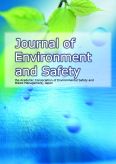Volume 1, Issue 2
Displaying 1-6 of 6 articles from this issue
- |<
- <
- 1
- >
- >|
Original Articles
-
2010 Volume 1 Issue 2 Pages 2_3-2_14
Published: 2010
Released on J-STAGE: December 15, 2011
Download PDF (2325K) -
2010 Volume 1 Issue 2 Pages 2_15-2_23
Published: 2010
Released on J-STAGE: December 15, 2011
Download PDF (1609K) -
2010 Volume 1 Issue 2 Pages 2_25-2_31
Published: 2010
Released on J-STAGE: December 15, 2011
Download PDF (1058K) -
2010 Volume 1 Issue 2 Pages 2_33-2_39
Published: 2010
Released on J-STAGE: December 15, 2011
Download PDF (1132K) -
2010 Volume 1 Issue 2 Pages 2_41-2_49
Published: 2010
Released on J-STAGE: December 15, 2011
Download PDF (1938K)
-
2010 Volume 1 Issue 2 Pages 2_51-2_57
Published: 2010
Released on J-STAGE: December 15, 2011
Download PDF (1298K)
- |<
- <
- 1
- >
- >|
